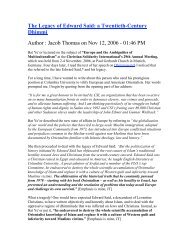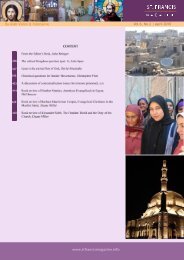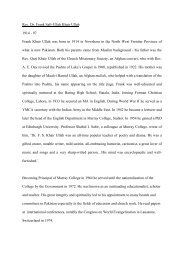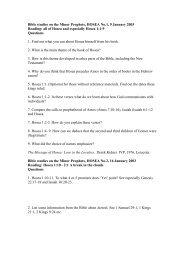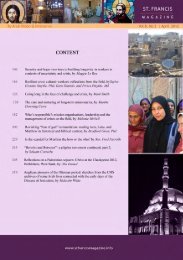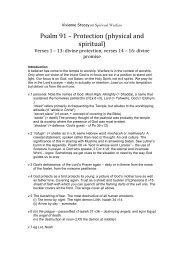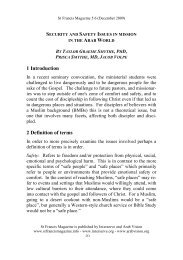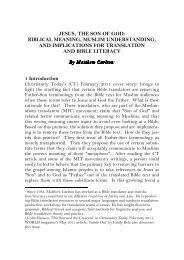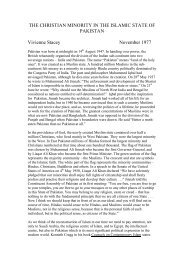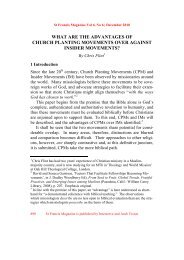download the pdf - St.Francis Magazine
download the pdf - St.Francis Magazine
download the pdf - St.Francis Magazine
Create successful ePaper yourself
Turn your PDF publications into a flip-book with our unique Google optimized e-Paper software.
<strong>St</strong> <strong>Francis</strong> <strong>Magazine</strong> Vol 8, No 4 | August 2012<br />
logical base, compounded by a continuing use of proof texting (Dixon<br />
2009: 18; Span and Span 2009: 59).<br />
There remains, <strong>the</strong>refore a need for better exegesis within C5 and<br />
insider movement debates. Too often superficial appeals to scripture<br />
are made to buttress claims which are greater than can be defended<br />
from <strong>the</strong> text under consideration. Greater exegetical care<br />
will benefit defences of C5, as well as exposing its arguments to<br />
wider scrutiny, as called for by Smith (2009: 31-33). In part, this<br />
will involve deeper and broader engagement with biblical scholarship:<br />
Teague (2008), for example engages positively with Richard<br />
Bauckham, in a manner which guards against reifying mono<strong>the</strong>ism<br />
away from a biblical metanarrative. It will also require engagement<br />
with <strong>the</strong> context of individual Bible verses and sections within <strong>the</strong>ir<br />
wider literary setting. Thus Acts read as a whole provides a relatively<br />
unexplored frame for controlling appeals to particular elements<br />
within its span, both for and against C5. Likewise, John’s<br />
Gospel, with its broader dualisms of light and darkness, is a necessary<br />
horizon for discussions of (for example) John 4, just as <strong>the</strong><br />
broader span of John’s ‘fa<strong>the</strong>r-son’ language will inform helpfully<br />
questions concerning use and non-use of such terminology. Similarly,<br />
1 Corinthians as an epistolary whole informs any appeal to one<br />
verse or one section of its argument: for example, appeals to 1 Corinthians<br />
7:17-24 (e.g. Lewis 2007: 76) need also consider 1 Corinthians<br />
6:10-11.<br />
Both literary and wider canonical contexts are especially important<br />
for positioning any appeal to Old Testament texts. In this<br />
light, Waterman (2007: 60, 62n27) provides some informative initial<br />
consideration of Deuteronomy 12:4, and Nikides (2009:102-107)<br />
makes several telling observations regarding biblical exclusivism.<br />
Such a wider frame of reference, toge<strong>the</strong>r with 2 Kings 17:15 (cf.<br />
Flint 2010b: 901), is important for positioning Naaman in 2 Kings<br />
5, ano<strong>the</strong>r biblical text frequently discussed within C5 debates (see,<br />
variously, Parshall 1998b: 404; Travis 2000: 55; Higgins 2004: 157;<br />
Woods 2003: 192; DeNeui 2005: 416; Travis and Travis 2005: 407;<br />
Tennent 2006: 108; Hoefer 2007a; Dixon 2009: 11; Higgins 2009:<br />
90-91; and, especially, Baeq 2010). The same can be said for appeals<br />
<strong>St</strong> <strong>Francis</strong> <strong>Magazine</strong> is a publication of Interserve and Arab Vision 486


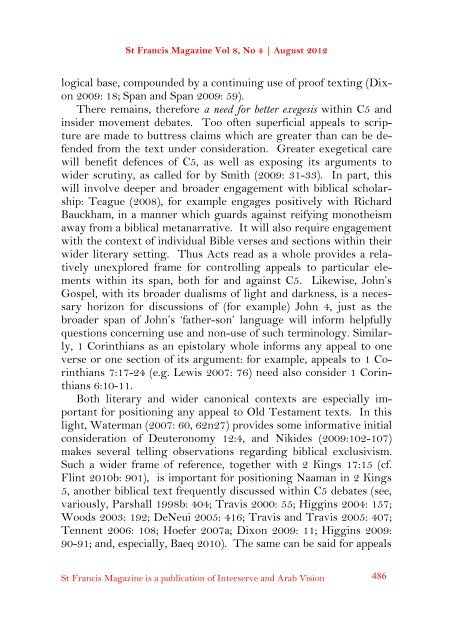

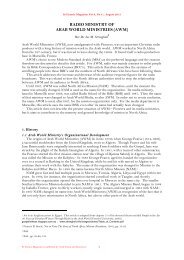
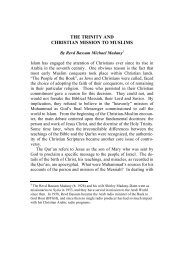
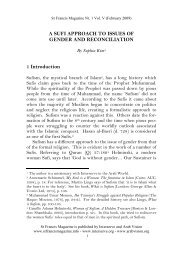
![Reflections on Surah Fatiha and the Lord's Prayer[1] - St.Francis ...](https://img.yumpu.com/49377951/1/184x260/reflections-on-surah-fatiha-and-the-lords-prayer1-stfrancis-.jpg?quality=85)
